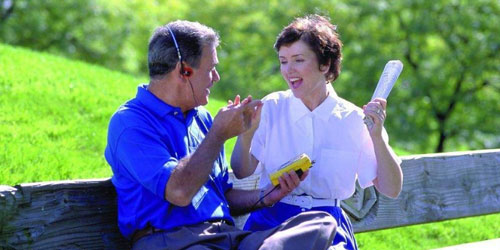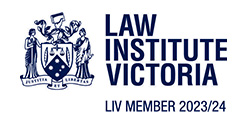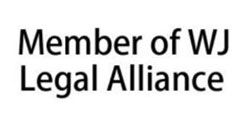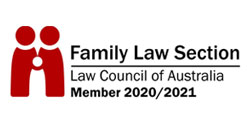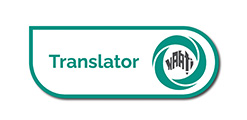Overview of Australian Reunion Immigration

If the applicant's spouse, children or parents are Australian citizens or permanent residents, overseas applicants can apply for reunion to reunite with them and obtain Australian permanent residence status.
Common reunion immigration in Australia is divided into three categories: reunion immigration of husband and wife, reunion of parents with Australian children, and reunion of children with Australian parents.
Couple reunion immigration
If one spouse holds permanent residency status, overseas spouses can apply for partner visa. The focus of such visa assessment is the genuineness of the spouse relationship.
(1) Subclass 309 Partner (Provisional) Visa (apply this visa whilst the visa applicant is offshore)
Those who have been married or registered their relationship with an Australian citizen, permanent resident or New Zealand citizen, or have lived together for more than 12 months, can still apply for a 309 visa when they submit the visa outside Australia. 2 years from the date of visa application, if their relationship still exists, there is no need to re-submit the application, immigration will send forms for the permanent visa subclass 100 application.
Subclass 309 Visa Criteria
The prerequisite for applying for a 309 visa is that the applicant is overseas and the spouse of the applicant is an Australian citizen, a permanent resident or a New Zealand citizen. In addition, the following requirements must be met
1- Both husband and wife are over 18 years old
2- The spouse and the sponsor are in genuine married relationship and maintains the relationship during the application
3- De Facto applicants:
Before you apply, you and your partner are de facto couples living together for more than 12 months. If you have not maintained a cohabitation relationship for more than 12 months,
However, you can still apply for a 309 visa if you meet
Tour Cohabitation relationship is registered in Australia.
5- Applicants must meet health and character requirements.

Subclass 300 P rospective Marriage Visa
The 300 visa allows you to come to Australia and marry your fiance (husband). This visa allows you to come to Australia and you must marry the sponsor within the visa validity period. The visa is valid for 9 months. You can convert your visa in Australia to onshore partner visa.
Subclass 300 Visa Criteria
1. must intend to marry within 9 months of visa grant
2. sponsor and applicant must have met in person
3. sponsor and applicant are k nown to each other personally
4. must be over 18 years of age
5. The parties genuinely intend to live together as spouse

Parent reunion immigration
If the child holds Australian permanent residence status in Australia, overseas parents can apply for parent visa to obtain Australian permanent residence status to reunite with their children in Australia and get pension in Australia after ten years.
(1) Permanent residence visa for parents
Advantages of 103 parent visa: less cost; however, the waiting time for 103 visa is very long. Current waiting time is about 30 years. The waiting time for 143 visa is about 3-5 years. you can convert to 143 visa at any time after you submit 103 visa, without requeuing and resubmitting support documents; Parents who have submitted 103 can apply for a visit visa.
Subclass 103 Visa Criteria
1- Applicant's child is a permanent resident of Australia / Australian citizen / New Zealand citizen and has settled in Australia
2- Pass the family balance test
3- Applicant meets health and character requirements

(2) Subclass 143 Contributory Parent Visa
Compared to the lengthy processing period of the 103 parent visa, the processing time of the 143 visa and the 173 visa is short, and parents and children can be reunited as soon as possible. The 143 visa requires a one-off payment of all fees.
143 Visa Criteria
1- that you be sponsored by your child or other eligible sponsor in Australia, or an applicant holding a 173 paid parental temporary visa
2- your child or adopted child has resided in Australia as an Australian citizen, permanent resident or valid New Zealand citizen for more than 2 years at the time the visa application was submitted.
3- meet the "Family Balanced Test" at least half of the applicant's children live permanently in Australia or more of your children live in Australia than in other countries.
To meet this criterion, the main applicant needs to meet the following conditions:
(1) at least half of the applicant's children and stepchildren are Australian citizens or permanent residents and reside in Australia, or
(2) More children live permanently in Australia than in other countries.
Note:-The children involved in the family balance test include: children, stepchildren, adopted children.
(3) Subclass 173 Contributory Parent (Temporary) Visa
The 173 visa can be paid in two installments. After obtaining the 173 visa, remaining payment is paid within 2 years. After obtaining a permanent visa, the applicant will directly enjoy free health insurance. Social security benefits will need to wait another 2 years, and the pension will need to wait 10 years before they can enjoy it.
Subclass 173 Visa Criteria
1- Be sponsored by your child or other eligible sponsor in Australia.
2- your child or adopted child has resided in Australia as an Australian citizen, permanent resident or valid New Zealand citizen for more than 2 years at the time the visa application was submitted.
3- meet the "Family Balanced Test" at least half of the applicant's children live permanently in Australia or more of your children live in Australia than in other countries.
To meet this criterion, the main applicant needs to meet the following conditions:
(1) at least half of the applicant's children and stepchildren are Australian citizens or permanent residents and reside in Australia, or
(2) There are more children living permanently in Australia than in other countries.
Note: The children involved in the family balance test include: children, stepchildren, adopted children.
Children reunite with their parents in Australia
If the parents hold Australian permanent residency status in Australia, overseas children can apply for visas to obtain Australian permanent residency status to reunite with their parents in Australia.
(1) Subclass 445 Dependent Child Visa (Temporary Visa)
If the parent has obtained a temporary partner visa, the child can be included in the permanent partner visa application.
Subclass 445 Visa Criteria
1- The applicant can be the biological child, step-child, adopted child of the parent
2- Parent holds 309 or 820 visa
3- Parent and child are sponsored by the same sponsor
4- The child is single, not more than 18 years old, or financially dependent on a parent holding a temporary partner visa.
5- Meeting health and character requirements
6- Applications can be submitted within or outside Australia.
7- If you are the child of the applicant and have other brothers and sisters, you need to submit the application separately.

(2) Subclass 101 Child Visa (Permanent Visa)
The child must be a dependent child of a parent who is an Australian citizen, eligible New Zealand citizen or Australian permanent resident,

Subclass 101 Visa Criteria
1- Applicant (Children outside Australia) The applicant must be the child or stepchild of the sponsor. The sponsor must be an Australian citizen, holder of an Australian permanent residence visa, or a eligible New Zealand citizen.
2- Stepchild is stepchild if the stepparent who provided the sponsorship is not the child's biological parent, but has the legal responsibility to take care of the child, then the stepchild under 18 can be included in this application.
3- Adopted children are children outside Australia that were adopted before their parents become Australian citizens, holders of Australian permanent residency visas, or eligible New Zealand citizens. Apply in the directory.
4- Dependent children must be dependents, of their sponsor. Children under the age of 18 are considered dependents. Children over the age of 18 can also be considered dependents who must rely more on sponsors than others or financial support sources: to meet the child's basic needs, food, accommodation, clothing, and so on.
5- age
When submitting a visa application, children must be under 25 years of age, and if children are over 18 years of age, they should be full-time students and rely financially on sponsoring their parents. The following are considered as full-time students:
(1) Effective admissions and active participation in professional or vocational qualification courses after full-time middle school
(2) This course has been started since the age of 18, or within 6 months of completing secondary education, or within a reasonable period.
(3) No full-time employment
6- Marital status As an applicant, the child must be single, not married, not in de facto relationship, not engaged. Note: Children over the age of 18 must not only be single, but also have never been married or have a de facto partner.
7- Sponsorship Requirements
(1) Be an Australian citizen
(2) Holder of permanent residence visa in Australia
(3) Eligible New Zealand citizens
(4) Be the parent or stepparent of the child
(5) Over 18 years of age Note: (1)-(3) meet one of them.
